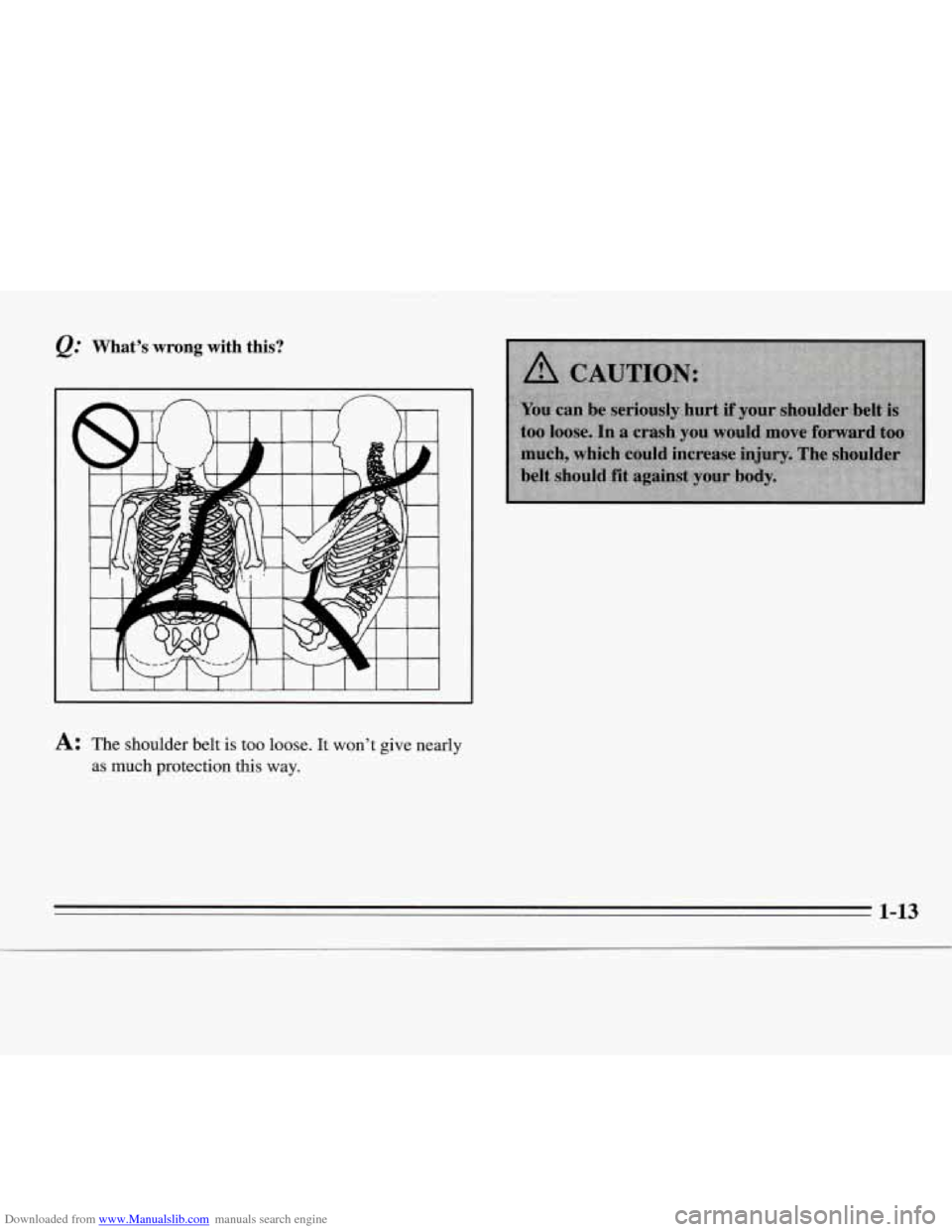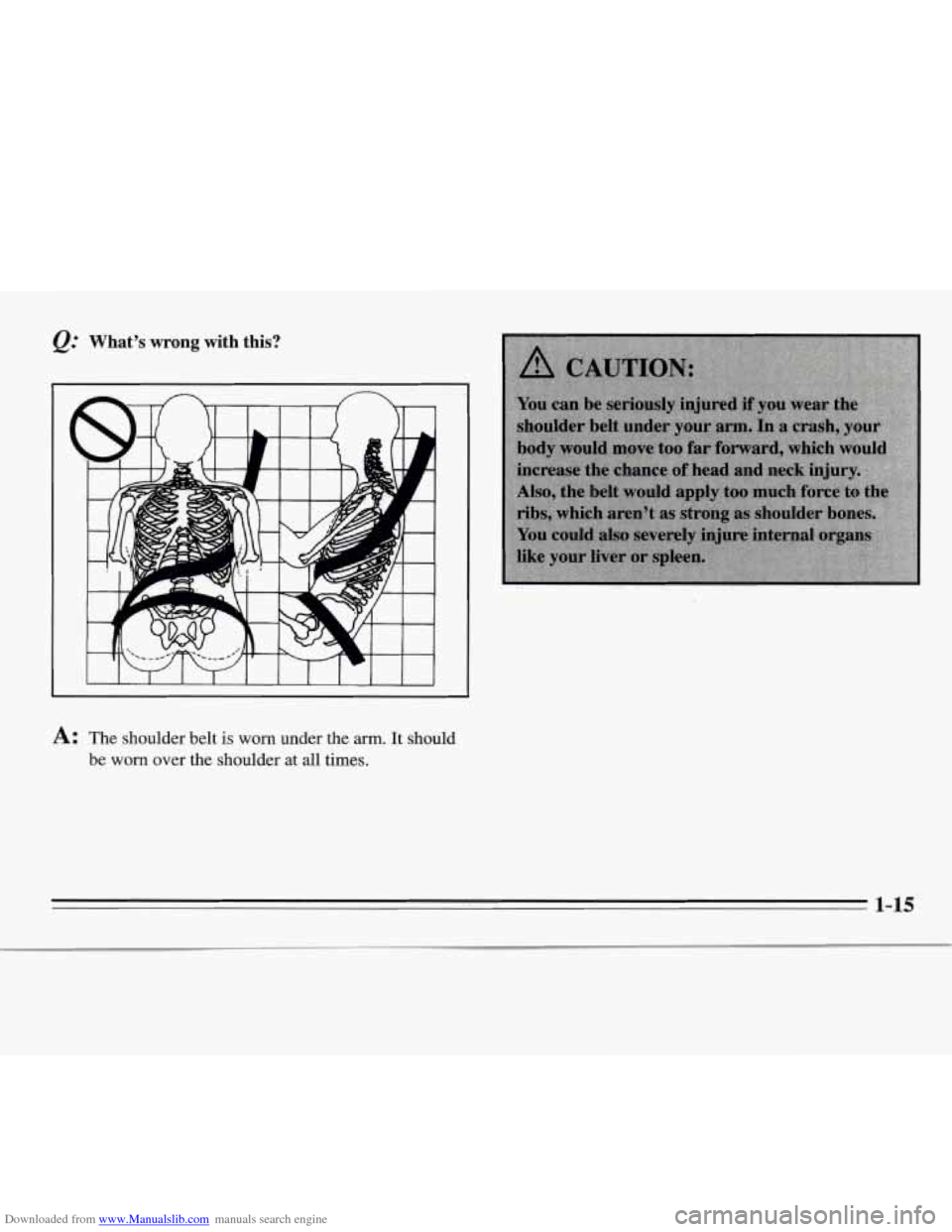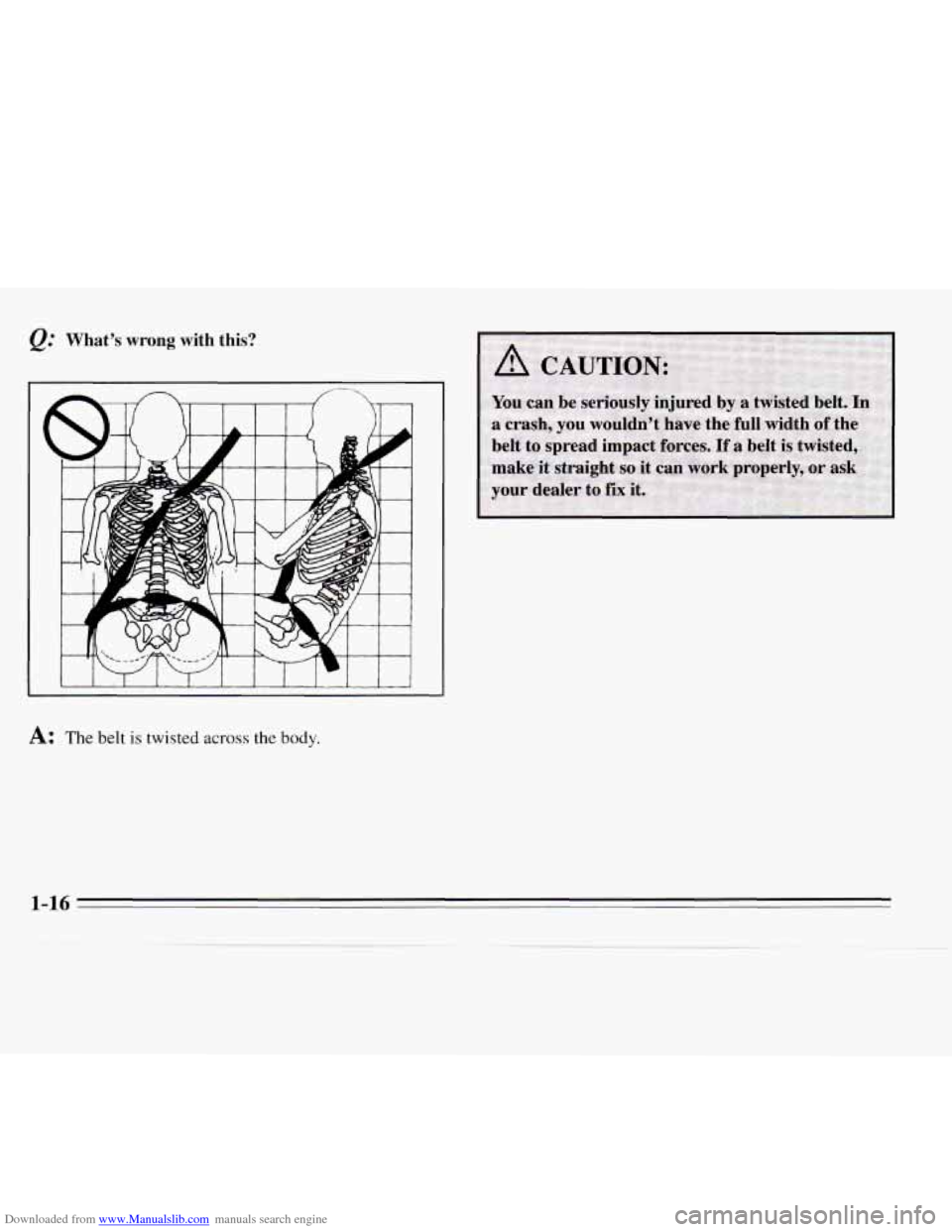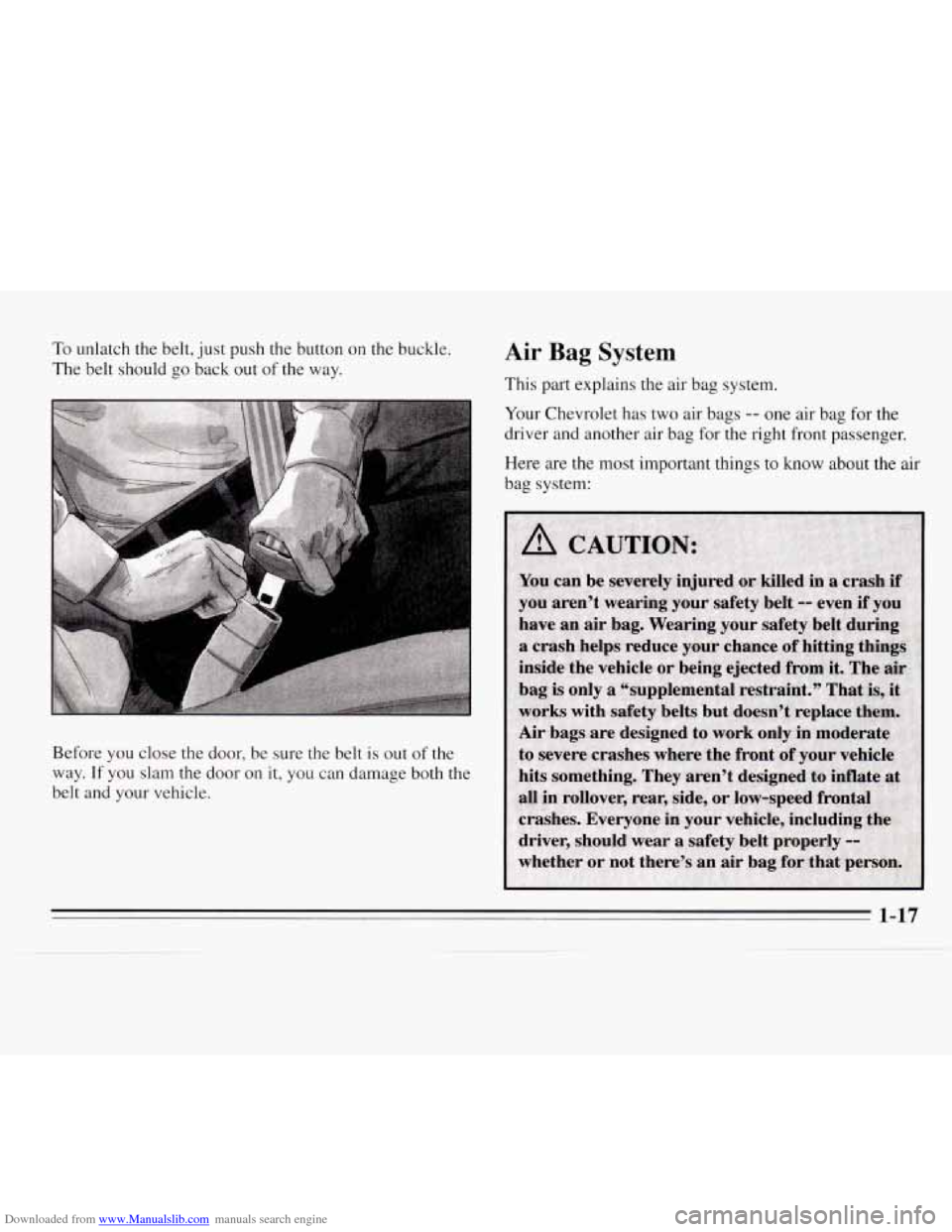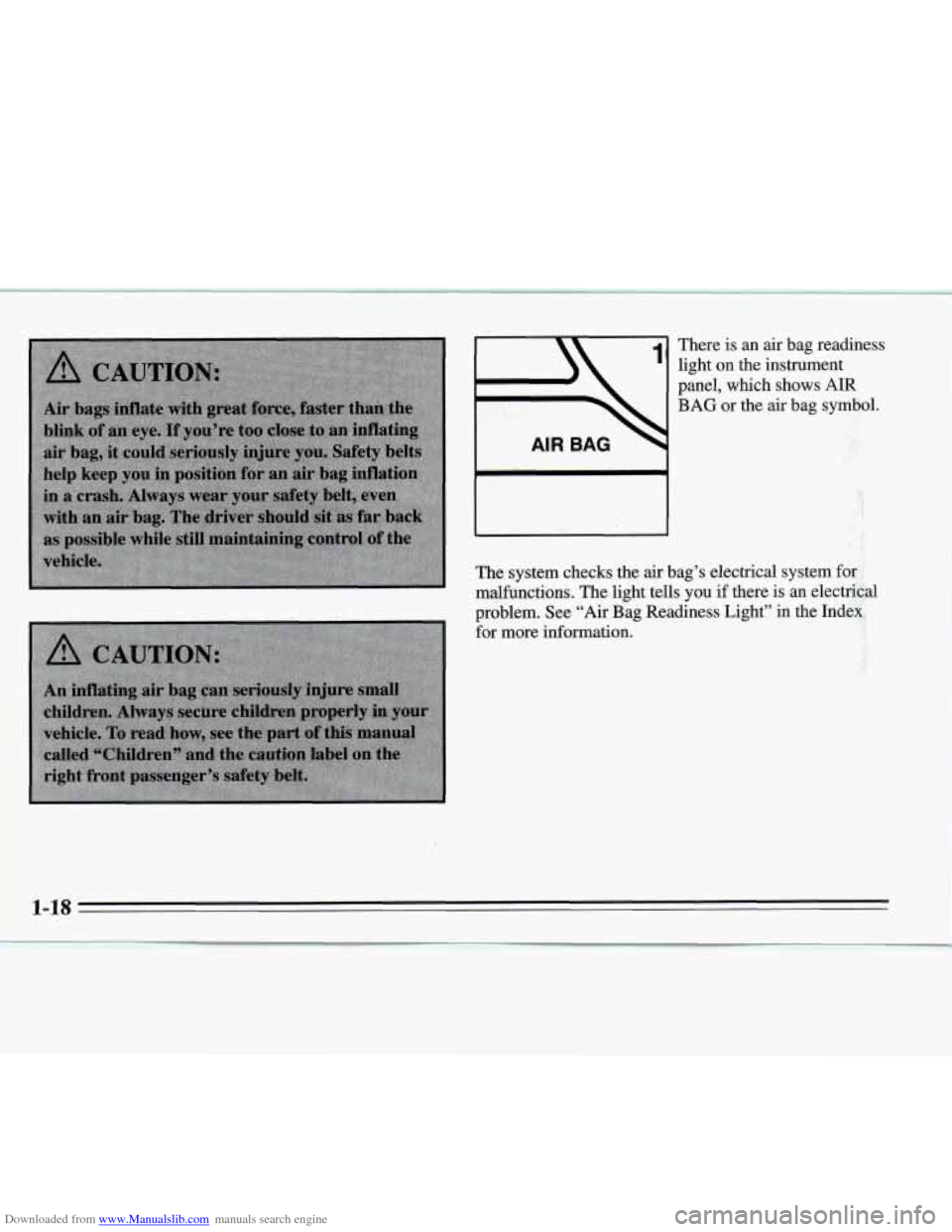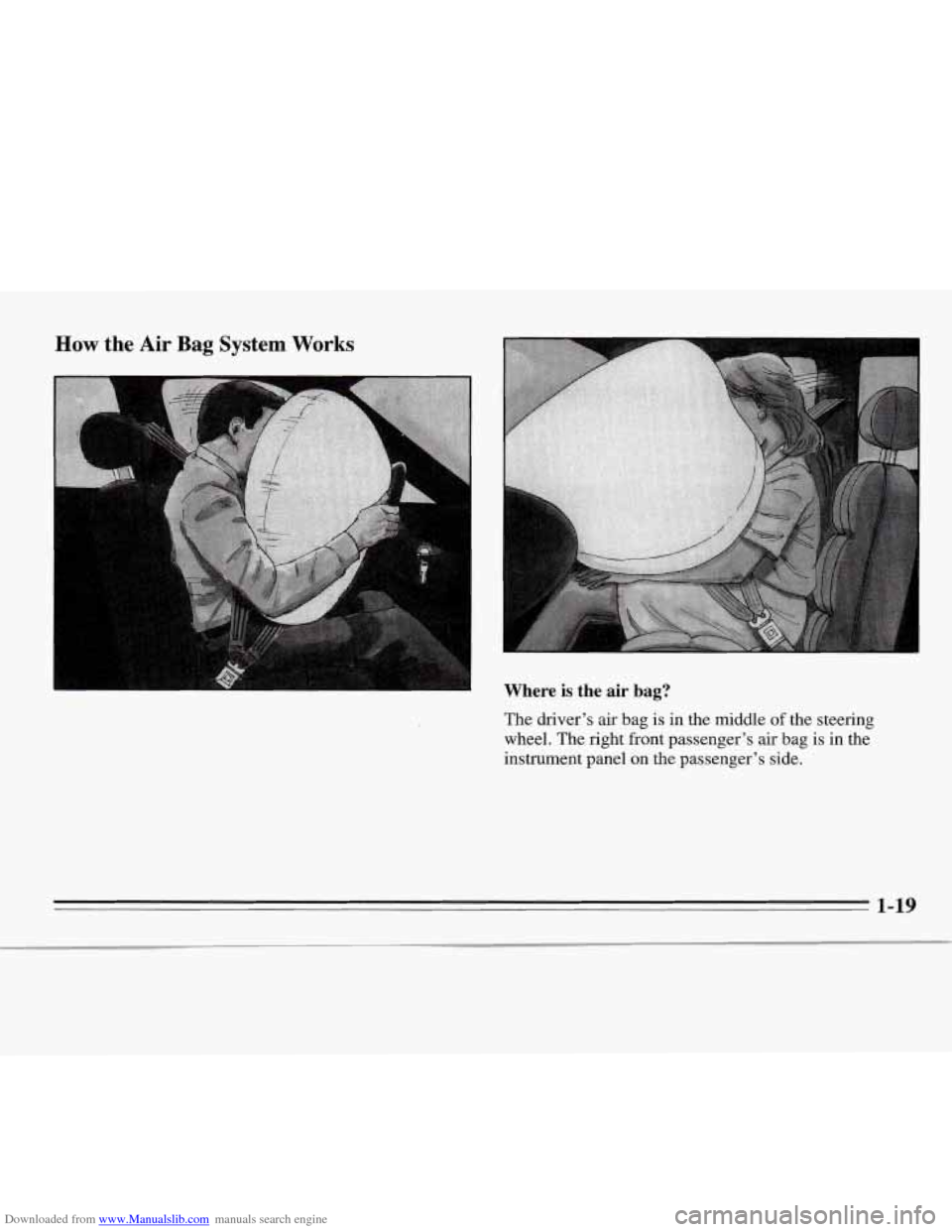CHEVROLET MONTE CARLO 1995 5.G Owner's Manual
MONTE CARLO 1995 5.G
CHEVROLET
CHEVROLET
https://www.carmanualsonline.info/img/24/8240/w960_8240-0.png
CHEVROLET MONTE CARLO 1995 5.G Owner's Manual
Trending: windshield wipers, fuel tank capacity, radiator, hood release, audio, fuse, check engine
Page 21 of 324
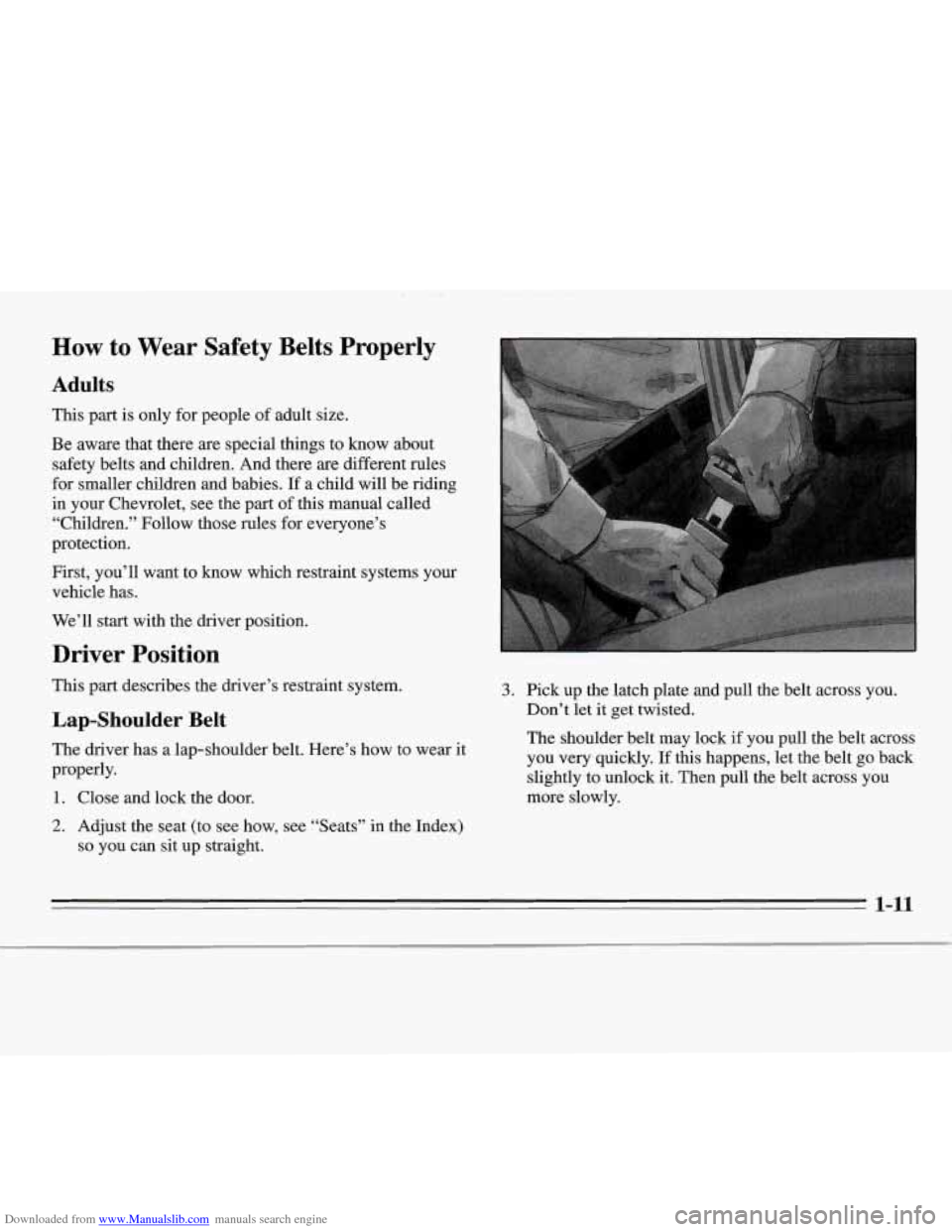
Downloaded from www.Manualslib.com manuals search engine I
How to Wear Safety Belts Properly
Adults
This part is only for people of adult size.
Be aware that there are special things to know about
safety belts and children. And there are different rules
for smaller children and babies.
If a child will be riding
in your Chevrolet, see the part
of this manual called
“Children.” Follow those rules for everyone’s
protection.
First, you’ll want to know which restraint systems your
vehicle has.
We’ll start with the driver position.
Driver Position
This part describes the driver’s restraint system.
Lap-Shoulder Belt
The driver has a lap-shoulder belt. Here’s how to wear it
properly.
1. Close and lock the door.
2. Adjust the seat (to see how, see “Seats” in the Index)
so you can sit up straight.
3. Pick up the latch plate and pull the belt across you.
Don’t let it get twisted.
The shoulder belt may lock
if you pull the belt across
you very quickly.
If this happens, let the belt go back
slightly to unlock
it. Then pull the belt across you
more slowly.
1-11
Page 22 of 324
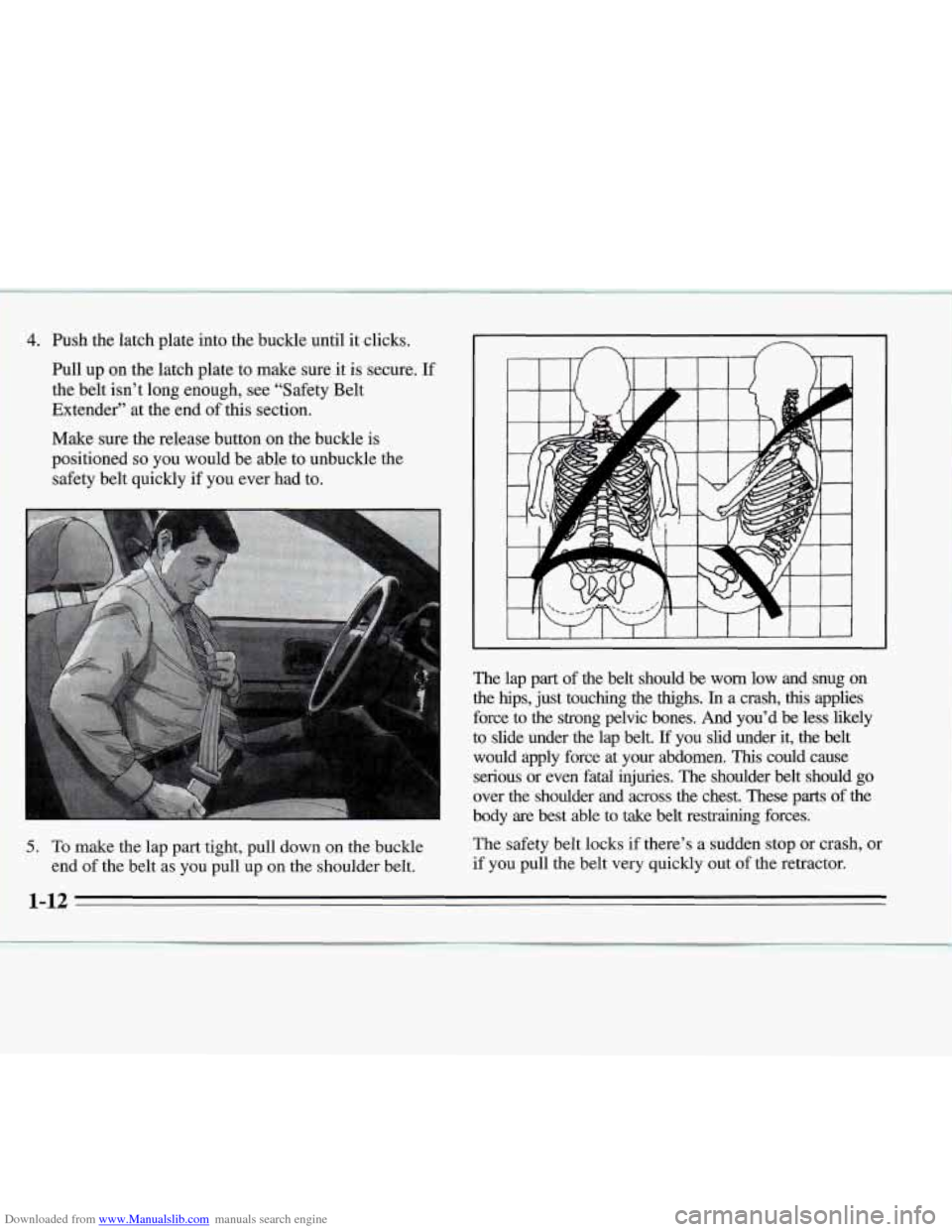
Downloaded from www.Manualslib.com manuals search engine 4. Ish the latch plate into the buckle until it clicks.
Pull up on the latch plate to make sure it is secure.
If
the belt isn’t long enough, see “Safety Belt
Extender” at the end
of this section.
Make sure the release button on the buckle is
positioned
so you would be able to unbuckle the
safety belt quickly
if you ever had to.
5. To make the lap part tight, pull down on the buckle
end of the belt as you pull up on the shoulder belt.
~
The lap part of the belt should be worn low and snug on
the hips, just touching the thighs.
In a crash, this applies
force to the strong pelvic bones. And you’d be less likely \
to slide under the lap belt.
If you slid under it, the belt
would apply force at your abdomen.
This could cause
serious or even fatal injuries. The shoulder belt should
go
over the shoulder and across the chest. These parts of the
body are best able to take belt restraining forces.
The safety belt locks if there’s a sudden stop or crash, or
if you pull the belt very quickly out of the retractor.
1-12
Page 23 of 324
Downloaded from www.Manualslib.com manuals search engine Q.’ What’s wrong with this?
A: The shoulder belt is too loose. It won’t give nearly
as much protection this way.
1-13
Page 24 of 324
Downloaded from www.Manualslib.com manuals search engine Q: What's wrong with this?
A: The belt is buckled in the wrong place.
1-14
-
Page 25 of 324
Downloaded from www.Manualslib.com manuals search engine &: What’s wrong with this?
I I
A: The shoulder belt is worn under the arm. It should
be
worn over the shoulder at all times.
.. 1-15
Page 26 of 324
Downloaded from www.Manualslib.com manuals search engine &: What's wrong with this?
A: The belt is twisted across the body.
1-16
Page 27 of 324
Downloaded from www.Manualslib.com manuals search engine To unlatch the belt, just push the button on the buckle.
The belt should go back out of the way.
Before you close the door, be sure
the belt is out of the
way. If you slam the door on it, you can damage both the
belt and your vehicle.
Air Bag System
This part explains the air bag system.
rour Chevrolet has two air bags
-- one air bag for the
driver and another air bag for the right front passenger.
Here are the most important things to know about the air
bag system:
1-17
Page 28 of 324
Downloaded from www.Manualslib.com manuals search engine There is an air bag readiness
light on the instrument
panel, which
shows AIR
BAG or the air bag symbol.
The system checks the
air bag’s electrical system for
malfunctions. The light tells
you if there is an electrical
problem. See “Air Bag Readiness
for more information. Light”
in the
Index.
1-18
1
Page 29 of 324
Downloaded from www.Manualslib.com manuals search engine How the Air Bag System Works
I
c
Where is the air bag?
The driver’s air bag is in the middle of the steering
wheel. The right front passenger’s air bag is in the
instrument panel
on the passenger’s side.
1-19
Page 30 of 324
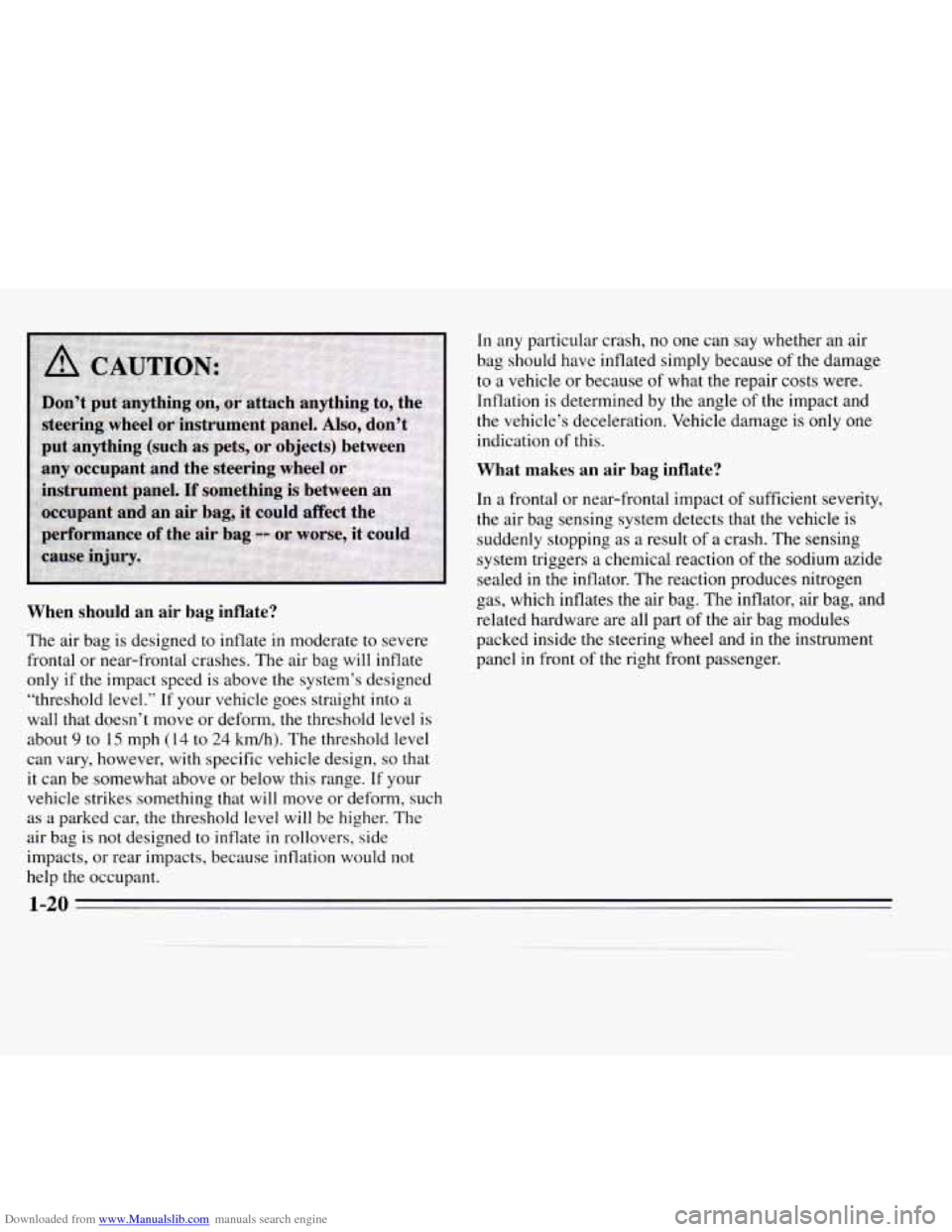
Downloaded from www.Manualslib.com manuals search engine When should an air bag inflate?
The air bag is designed to inflate in moderate to severe
frontal or near-frontal crashes. The air bag will inflate
only if the impact speed
is above the system’s designed
“threshold level.” If your vehicle goes straight into a
wall that doesn’t move or deform, the threshold level
is
about 9 to 15 mph (14 to 24 kdh). The threshold level
can vary, however, with specific vehicle design,
so that
it can be somewhat above or below this range. If your
vehicle strikes something that will move or deform, such
as a parked car, the threshold level will be higher. The
air bag is not designed to inflate in rollovers, side
impacts, or rear impacts, because inflation would not
help the occupant. In
any particular crash,
no one can say whether an air
bag should have inflated simply because of the damage
to a vehicle or because of what the repair costs were.
Inflation is determined by the angle
of the impact and
the vehicle’s deceleration. Vehicle damage is only one
indication of this.
What makes an air bag inflate?
In a frontal or near-frontal impact of sufficient severity,
the air bag sensing system detects that the vehicle is
suddenly stopping as a result of a crash. The sensing
system triggers
a chemical reaction of the sodium azide
sealed in the inflator. The reaction produces nitrogen
gas, which inflates the air bag. The inflator, air bag, and
related hardware are all part of the air bag modules
packed inside the steering wheel and in the instrument
panel in front of the right front passenger.
1-20
Trending: service schedule, wheel torque, ground clearance, spare tire location, relay, warning light, service


